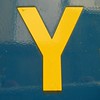1. Yes. Definitely. In fact, in this generation, a classroom that lacks technology is most likely not benefitting its students or allowing them to acquire cultural proficiency on any great scale. Within middle and upper class society, almost all jobs in professional arenas require the use of technology, and more than likely are looking for employees who have attained some measure of technological rhetoric. Consequently, a classroom without technology is a classroom that is not preparing students for holistic success in society and life.
Understanding this basic premise, we can see that technology not only aids in learning but is critical to learning. Computers, power points, SMART board, and other such tools greatly implement the effective teaching and learning of basic skills involving reading, writing, math, history, the sciences, etc. Even more, technology stands alone as an entirely new subject that is equally vital to the success of students. Knowledge acquired in any of these other basic subjects is nearly irrelevant without a student who is capable of communicating that knowledge through the use of current technology.
2. Fortunately, many students are learning much about technology outside of the classroom which can then be incorporated into the classroom setting. They are learning technology through the use of resources at home: computers, the internet, technological programs, video-games, software, and various other tools. I hope to tap into the knowledge they already possess and allow them to continue developing it by remaining "technologically relevant." I desire to use a SMART board for classroom lessons, perhaps to set up classroom discussions via the internet and some sort of class blog, to acquire classroom software to expand their knowledge of the sciences and grammar, and to allow them freedom to produce videos, etc. for class projects in order to integrate technology and learning.
3. Although I have not begun doing classroom observations at this point, I have been informed that I will begin Practicum I at Bothell High School. Because I have not yet had the opportunity to visit the classroom, I am not sure what level of technology that my students have access to. However, reading about the 3 Tiers of Technological Use in the Classroom was very informative. I am intrigued by the ideas mentioned in Tier 3, especially the concept of allowing students to "invent products through programming." I am not sure what the "Marco Polo" software is, but it was referred to in each of the 3 Tiers as a Teacher Lesson Resource, and I would love to learn more about it. I think it would be incredible to use on-line tools to provide lessons and activities for my students. The only difficulty I can foresee with this level of technological advancement is a fear of leaving behind those students who may not have computer/internet access at home.
4. I enjoyed looking at the GLE's for technology in education, and I have come up with a variety of lessons that I could incorporate into meeting these standards:
A) "Reading GLE 3.3.1 - Apply appropriate reading strategies for interpreting technical and non-technical documents used in job-related settings.
Read professional-level materials, including electronic information, that match career or academic interests and demonstrate understanding of the content."
To incorporate this GLE into my classroom, I could assign a class project based on identifying a career that my students are interested in researching. I could ask them to research 3 different sources on-line, and provide information on the web-site's credibility. Then, I could ask them to set up a web-site which incorporates the information that they have accumulated, why the career interests them, and steps that they would need to take in order to enter the specified career of their choice.
B) "Writing GLE 1.3.1 - Revises text, including changes in words, sentences, paragraphs, and ideas.
Selects and uses effective revision tools or strategies based on project (e.g., sentence analysis form, revision criteria checklist, “find-and- replace” or “track changes” functions of word processing program)."
In order to teach my students about writing in technology, I can assign class papers in which I require them not only to use such things as the grammar and spell check, but also require them to post their papers on our classroom blog. At that point, I could require them to take part in peer-editing, and use the high-lighting and editing tools on the word processor which would allow them to make and track changes in one another's papers, while learning about grammar and writing structures as well.
C) "Writing GLE 1.5.1 - Publishes in formats that are appropriate for specific audiences and purposes.
Selects from a variety of publishing options keeping in mind audience and purpose (e.g., website, literary magazines, blogs, local newspaper).
Publishes using a range of graphics and illustrative material (e.g., time lines, flow charts, political cartoons, diagrams)."
This GLE excites me because I can learn alongside my students! I can require them to use Microsoft tools outside of a simple word processor, such as Power Point, Excel, and other resources in order to develop various projects that they can then share with the class. I would love to also assign them topics which would encourage them to learn how to incorporate short videos/music/etc. into their learning. I feel that these would benefit their development of technological skills and also be entertaining and fun for them.
5) For spreadsheet concerning Technological Competency, see:














